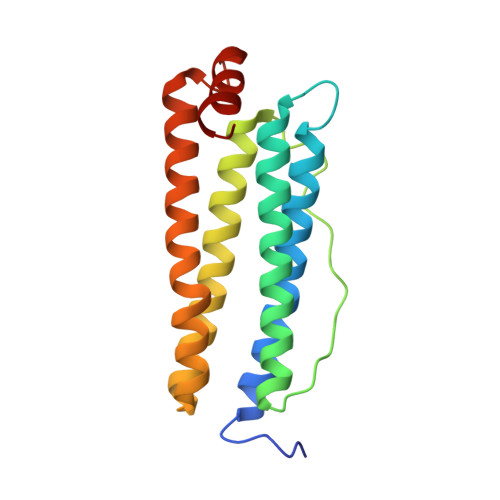Directing noble metal ion chemistry within a designed ferritin protein
Butts, C.A., Swift, J., Kang, S.G., Di Costanzo, L., Christianson, D.W., Saven, J.G., Dmochowski, I.J.(2008) Biochemistry 47: 12729-12739
- PubMed: 18991401
- DOI: https://doi.org/10.1021/bi8016735
- Primary Citation of Related Structures:
2Z6M, 3ERZ, 3ES3 - PubMed Abstract:
Human H ferritin (HuHF) assembles from 24 four-helix bundles to form an approximately 500 kDa protein with an 8 nm internal cavity. HuHF provides a useful model for studying the transport of metal ions in solution to buried reaction sites in proteins. In this study, HuHF was redesigned to facilitate noble metal ion (Au(3+), Ag(+)) binding, reduction, and nanoparticle formation within the cavity. Computationally determined amino acid substitutions were targeted at four external and four internal surface sites. A variant with a total of 96 cysteines and histidines removed from the exterior surface and 96 non-native cysteines added to the interior surface retained wild-type stability and structure, as confirmed by X-ray crystallography, and promoted the formation of silver or gold nanoparticles within the protein cavity. Crystallographic studies with HuHF variants provide insight into how ferritins control access of metal ions to interior residues that perform chemistry.
- Department of Chemistry, University of Pennsylvania, 231 South 34th Street, Philadelphia, Pennsylvania 19104-6323, USA.
Organizational Affiliation:



















